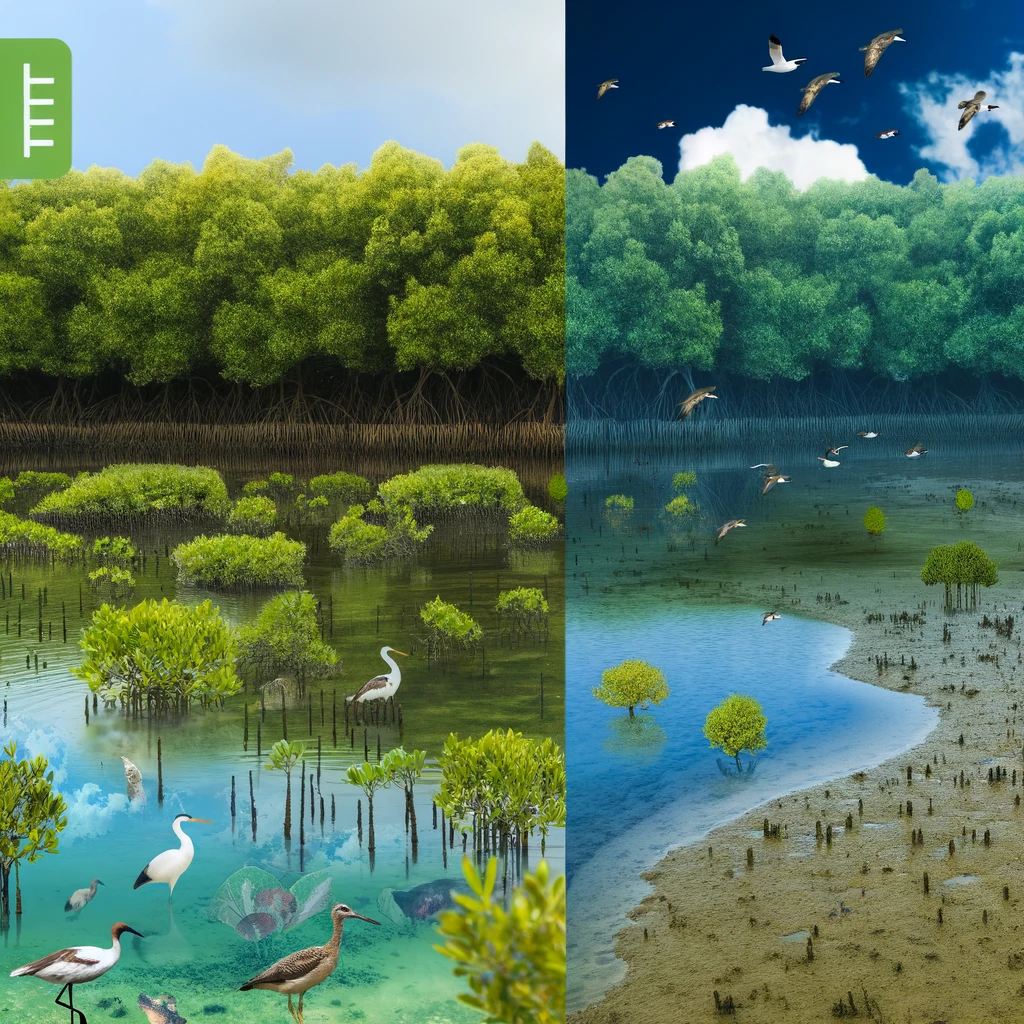In the face of ongoing climate change, recent studies have provided valuable insights into the evolving dynamics of coastal wetlands. These natural interfaces between land and sea are renowned for their rich biodiversity and serve as essential defenses against coastal erosion, in addition to acting as natural carbon sinks. However, the burgeoning threats of climate change, coupled with human encroachment, pose significant challenges to their survival and functionality.
Key Highlights:
- Coastal wetlands are facing significant transformations due to climate change impacts, notably changes in temperature and rainfall.
- Studies predict the possible migration of mangrove forests northward, replacing salt marshes, and the transformation of some marshes into salty mud flats.
- Restoration efforts in coastal wetlands show promising results in enhancing climate change mitigation benefits.
Impact of Climate Change on Coastal Wetlands
Research underscores the vulnerability of coastal wetlands to the effects of climate change, particularly with regards to alterations in temperature and rainfall patterns. Notable findings suggest the potential northward migration of mangrove forests, which could lead to the displacement of salt marshes. Furthermore, some marshes may transition into salty mud flats, a change that could dramatically alter their ecological character and the benefits they provide.
Restoration Efforts and Climate Change Mitigation
Promising strides have been made in the realm of restoration of coastal wetlands, aiming to bolster their resilience against climate change. Projects that restore tidal exchange in impounded wetlands have shown to significantly enhance their elevation resilience and their capacity for climate change mitigation. Such efforts not only contribute to carbon sequestration but also reinforce the wetlands’ role in mitigating coastal erosion and adapting to sea-level rise.
The Role of Macroclimate Drivers in Assessments
The critical role of macroclimate drivers, such as temperature and rainfall regimes, in assessing the vulnerability of coastal wetlands to climate change has been highlighted by research funded by the USGS Climate Research & Development Program. The southeastern United States, home to a majority of the country’s coastal wetlands, is identified as especially susceptible to climate-induced changes. This sensitivity is attributed to its location along significant climatic gradients, which could precipitate marked shifts in wetland ecosystems, including the poleward expansion of mangrove forests at the expense of salt marshes.
A study focused on the Gulf of Mexico, conducted by the US Geological Survey and the University of Texas Rio Grande Valley, warns of the transformative impacts of temperature and rainfall changes on wetlands. These changes are expected to modify wetland plant communities, potentially transforming salt marshes into mangrove forests or salty mud flats and affecting the structural integrity and ecological services of these habitats.
In sum, the interplay of climate change and human activity is reshaping coastal wetlands, with significant implications for biodiversity, coastal protection, and climate mitigation efforts. The highlighted studies call for a nuanced understanding of macroclimate influences and advocate for restoration as a vital strategy in safeguarding these critical ecosystems against future challenges.


























Add Comment